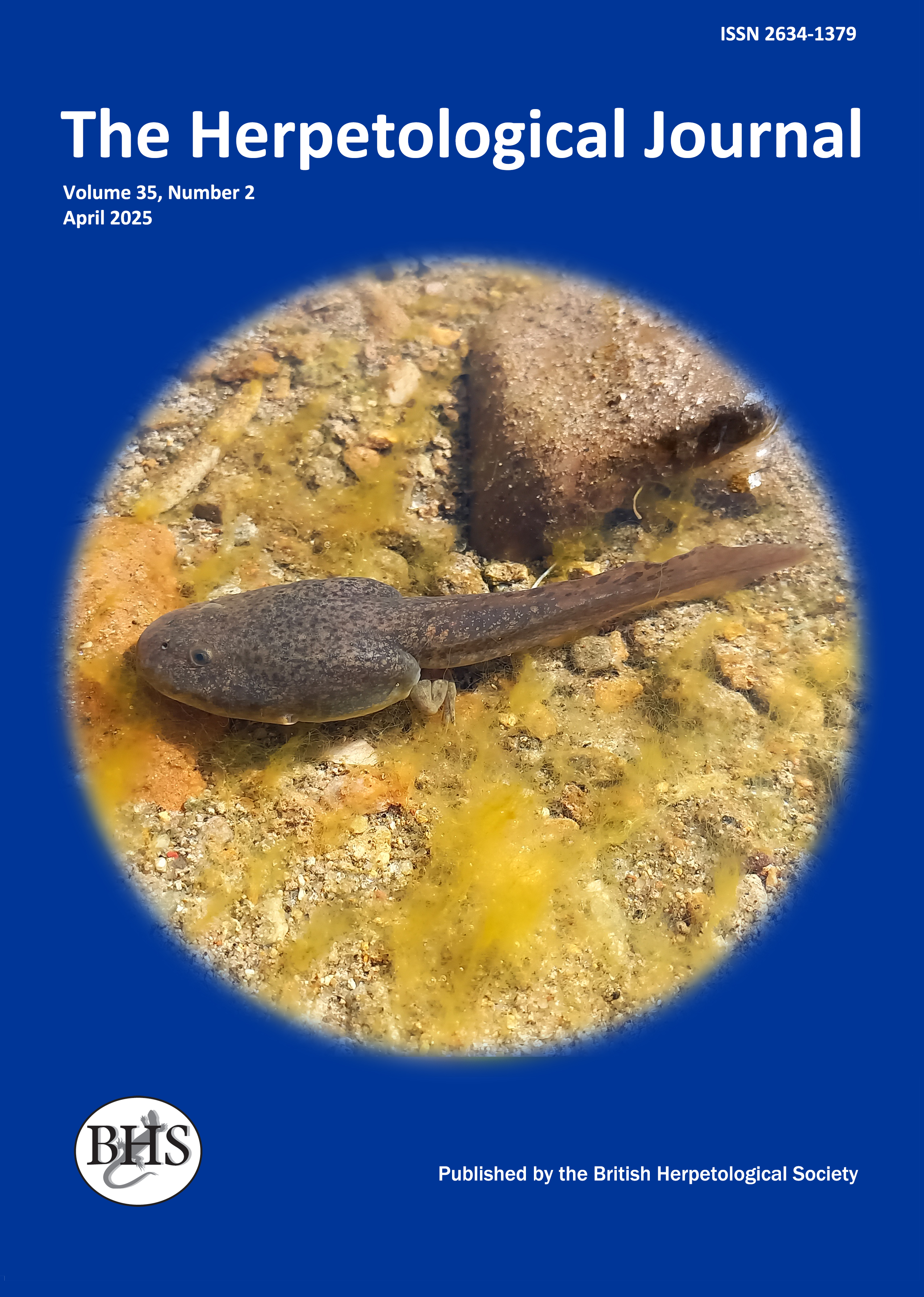
The Herpetological Journal
The Herpetological Journal is the Society's prestigious quarterly scientific journal. Articles are listed in Biological Abstracts, Current Awareness in Biological Sciences,Current Contents, Science Citation Index, and Zoological Record.
ISSN 0268-0130
2021 Impact Factor from Clarivate for the Herpetological Journal is 1.194, an increase of 0.332 from 2020.
pdf 01. Killing them softly: a review on snake translocation and an Australian case study
711 downloads
Open Access
https://doi.org/10.33256/31.3.118131
pp 118-131
Authors: Jari Cornelis, Tom Parkin & Philip W. Bateman
Abstract: Human-wildlife conflicts with ‘nuisance’ snakes are becoming more frequent around the world as urbanisation continues to encroach on remaining habitats. In an attempt to mitigate this issue, snakes are often translocated in an uncontrolled fashion, with little to no conservation value. To determine the most appropriate methods of translocation we reviewed the available primary literature on studies performing translocations of snakes. We found two types of translocation: long and short-distance. Based on the welfare of the animals involved and difficulty of achieving success with long-distance translocations, we deduced that short-distance translocations are the most favourable. We also reviewed the literature on a third method - repatriating wild populations of snakes with captive-bred or captive-reared individuals, the results
of which were very similar to those of long-distance translocations. In conjunction with a mark recapture study carried out by snake catchers in Darwin, Australia, we use our findings to make suggestions on the most appropriate course of action for the mitigation-based snake catching activities in Australia. The difficulty of ensuring successful outcomes for long distance translocations along with a high mortality rate meant we cannot suggest this as an appropriate method for managing ‘nuisance’ snakes. Instead, we argue that short distance translocations are the most suitable for the welfare of the snakes involved. Nevertheless, no outcome will be more favourable for the snakes than to be simply released within their home range accompanied by a change in attitude of the general public towards a willingness to coexist. Although we
focus primarily on Australia our suggested framework can be applied in any country where there is conflict with snakes. Furthermore, should our suggestions be implemented, they are merely a temporary solution to an ongoing problem and we are in desperate need for further research to devise a long-term management plan.
Keywords: serpentes, translocation, relocation, repatriation, human-wildlife conflict

